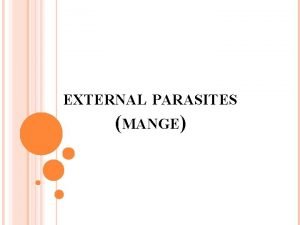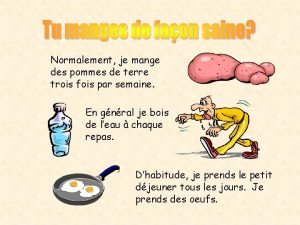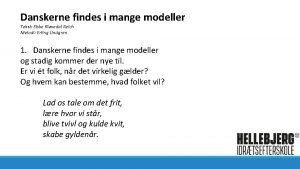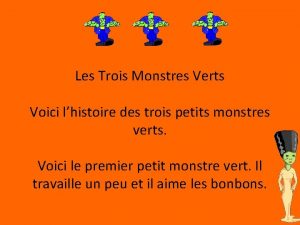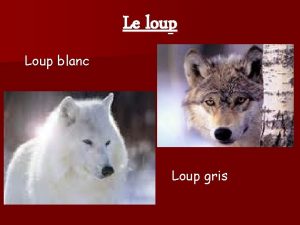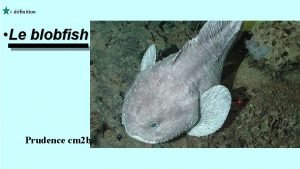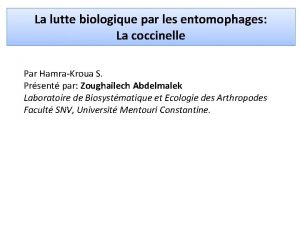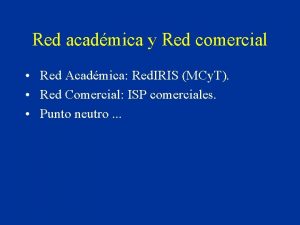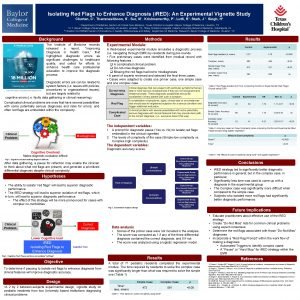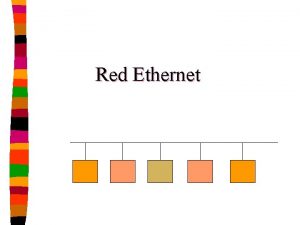Demodectic Mange Demodicosis or Red Mange Demodicosis is



















































- Slides: 51



Demodectic Mange (Demodicosis or Red Mange)


• Demodicosis is caused by a microscopic, cigar-shaped skin parasite called Demodex. • This mite is normally found in low numbers in the hair follicles of all animals, including humans. • In dogs, the mites (Demodex canis) are passed from the dam to the puppy during the first few days of life. • Demodex becomes a problem when the mites multiply and proliferate inside the hair follicles. • Their massive numbers cause an inflammatory reaction and a secondary bacterial infection. • As a result, the hair follicles are destroyed.

• Demodex occurs in animals with depressed immune systems. • It is also seen in animals with serious underlying disorders. • Dogs with diabetes, Cushing's disease, and cancer often develop demodicosis. • Demodicosis is frequently seen in puppies and young dogs. • Ninety percent of the puppies diagnosed with Demodex improve spontaneously by eight months to three years of age. • This is the age when the dog's immune system reaches maturity. • Three forms of domodicosis are recognized in dogs: localized demodicosis, generalized demodicosis, and pododemodicosis.

Demodectic Mange Mite

Sarcoptes scabei (Scabies Mites)

Sarcoptse sacbei Mite • Almost every domestic species has its own distinct variety of this mite. • S. scabei var. canis (dogs) • Notedres cati (cats) • Very pruritic because burrow into skin. • Scaly, crusty, skin lesions develop on the ears, lateral elbows and ventral abdomen. Zoonosis Alert!!

Ear mites (Otodectes cyonits)

Ear mite debris

• Common cause of otitis externa in dogs, cats and ferrets. • Occur primarily in the external canal, ear mites may be found anywhere on the body. • A common infestation site is the tail and head. • Mites are spread by direct contact. • Transmissible among and between canines and felines.

Ear Mite Egg

Ear Mite (Psorptes cuniculi) Rabbit Ear Mite


• Two orders exist : Mallophagia (biting lice) and Anoplura (sucking lice) • A “disease of neglect. ” • Some of the most prolific ectoparasites of domestic animals. • Infestation by lice is called pediculosis. • The eggs are called nits. • Dosoventraly flattened, wingless insects. • Transmitted by direct contact, but all life stages may be transmitted by fomites (inanimate objects such as blankets, brushes and other grooming equipment). • Species specific. Ex. Dog lice parasitize dogs only.

• Severe lice infestations can drop packed cell volumes as much as 10%to 20%, sometimes causing fatality. • Infested animals may be come more susceptible to other diseases and parasites and may succumb to stresses not ordinarily pathologic to uninfested animals.

Characteristically, the head of every chewing louse is wider than the widest portion of the thorax. The thorax contains 3 pairs of legs. They are smaller than sucking lice. Usually yellow and have a large, round head.

Hog Sucking Louse Sucking lice are red to gray (color depends on amount of blood ingested) Heads are narrower than widest portion of thorax. Have pincerlike claws.

Trichodectes canine biting louse

Hematopinus suis, the blood-sucking louse of swine

Note : Humans cannot get lice from pets. The pet cannot get lice from humans. Remember, SPECIES SPECIFIC!!

Flies

• The order Diptera includes many different species of flies. • Diptera are a large, complex order of insects. • As adults, most have only one pair of wings (di-(two), ptera(wings). • Diptera members vary insize, food source preference, and developmental stage that parasitizes the animal or produces lesions. • Dipterans may feed intermittently on vertebrate blood, saliva, tears of mucus. • As larvae, thay may develop in the subcutaneous tissues or within internal organs.

• Adult dipterans that make frequent visits to the vertebrate host to intermittently feed on blood are called periodic parasites. • Dipteran larvae that develop in the tissue or organs of the vetebrate host, produce a condition called myasis.

Cuterebra speceis (Wolf Warble)

Cuterebra • Larvae infest skin of rabbits, squirrels, small mammals • Occasionally found in neck of inquisitive kitten • Rarely in brain

Cuterebra Morphology Paired posterior spiracles set in a shallow cavity, each composed of many small serpentine slits (magnification, X 21. 8). Third-stage (L 3) Cuterebra maggot (17 by 5 mm) from the patient (magnification, X 8. 7). The cephalic end shows a pair of pointed mouth hooks.

How Big?


Cuterebra Life Cycle • Adult fly does not feed – lays eggs near entrance of rodent hole • L 1 waits for host, penetrates skin, makes a hole to breathe • L 3 leaves hole in skin, pupates in soil • PPP – 3 -4 weeks • Treatment – surgical removal of entire larva • Allergic reaction if not entirely removed?

• Larvae infest the skin of rabbits, squirrels, mice, rats, chipmunks, and occasionally, dogs and cats. • 2 nd stage larvae are grublike, 5 -10 mm ling and cream to grayish white in color. • 3 rd stage larvae are large, robust, black, and heavily spined. • Larval stages are usually found in swollen, cystlike subcutaneous sites, with a fistula or pore communicating to the outside environment. The larva breathes through this pore. • Larval sites are most commonly found on the neck and face, however they have been discovered in the eye.

**Important: Cuderebra larva must be carefully removed. Usually, the breathing hole is enlarged and the larva is removed with thumb forceps. If the larva is crushed during extraction, anaphylaxis may occur. http: //video. aol. com/video-detail/annabells-cuterebraremoval/2209805778

Flies Class Insecta – Order Diptera Mosquitoes Biting Flies with Larval Problems

Mosquitoes • Disease vector • • • Heartworms West Nile Virus (zoonosis) Equine Encephalitis (zoonosis) Malaria Equine Infectious Anemia • Only the female bites! • Male sucks plant juice to keep his energy up! (swamp fever)

Mosquito Biology • Need a water source for the life cycle • Adult female flying range – 1 mile • Male vs. female mosquitoes? • Male has feathered antennae

Mosquito Life Cycle


No Mosquitoes!!!

Biting Flies Horse Flies Deer Flies Stable Flies

Biology • Adult flies are the problem • Chewing mouthparts • Especially a problem to outdoor dogs with pointed ears • Common biting flies • Horse flies • Deer flies • Stable flies

Horseflies

Deerflies

Stable Flies (Stomoxys) • “Bayonet-like proboscis” YIKES!

More Stable Flies

Stable Fly Vs. House Fly

Flies with Larval Problems Screw Worm Flies Maggots Cuterebra

Screw Worm Flies • Myiasis – “Fly strike” • Larvae cause lesions in skin of cattle • Severe problems for rawhide industry • Biological control – Definition • Monogamous females mate for life use of sterile males

“Fly Strike”

Maggots • Larvae of domestic houseflies or botflies • Adult fly does not bite • Eggs laid in dirty, organic and/or moist areas

 Scab synonym
Scab synonym Tu mangeais
Tu mangeais Hvor mange bein i kroppen
Hvor mange bein i kroppen Je mange une orange
Je mange une orange Je mange des pommes
Je mange des pommes Vel kan vi strides om
Vel kan vi strides om Ulighedens mange ansigter
Ulighedens mange ansigter Que mange la cigogne
Que mange la cigogne Jeux de petit monstre vert qui mange des bonbons
Jeux de petit monstre vert qui mange des bonbons Hvor mange ulike kombinasjoner har en firesifret kode
Hvor mange ulike kombinasjoner har en firesifret kode Fault types
Fault types Ulighedens mange ansigter
Ulighedens mange ansigter Que mange le loup blanc
Que mange le loup blanc Synekdote
Synekdote Que mange la baleine bleue
Que mange la baleine bleue Tekst julebal i nisseland
Tekst julebal i nisseland Giv mig lyset tilbage
Giv mig lyset tilbage Quelqu'un qui mange de tout
Quelqu'un qui mange de tout Guden shiva
Guden shiva Hvor mange kromosomer har et menneske
Hvor mange kromosomer har et menneske Ulighedens mange ansigter
Ulighedens mange ansigter Worcester county asylum
Worcester county asylum Blobfish se mange
Blobfish se mange Que mange les coccinelles à part des pucerons
Que mange les coccinelles à part des pucerons Au dejeuner je mange
Au dejeuner je mange The original source of all genetic variation is _____.
The original source of all genetic variation is _____. Poetic devices in stereo hearts
Poetic devices in stereo hearts Bu green and yellow
Bu green and yellow Why does a red ball look red?
Why does a red ball look red? Ssalr
Ssalr Colors red orange yellow green blue purple pink
Colors red orange yellow green blue purple pink A red red rose tone
A red red rose tone Red over red the captain is dead
Red over red the captain is dead Red orange yellow green blue purple pink brown white black
Red orange yellow green blue purple pink brown white black Love simile
Love simile Literary devices table
Literary devices table Ram skin dyed red
Ram skin dyed red Red blood cells aka
Red blood cells aka Where the red fern grows vocabulary
Where the red fern grows vocabulary Red soil
Red soil A bag contains 30 discs 10 are red and 20 are blue
A bag contains 30 discs 10 are red and 20 are blue Etx-203ax red power light
Etx-203ax red power light Chromophore groups
Chromophore groups Convert red black tree to 2-3-4
Convert red black tree to 2-3-4 Ryan redcorn
Ryan redcorn Red bull gründung
Red bull gründung Tempest red black separation
Tempest red black separation Wtrfg
Wtrfg Integrated nursing pathway
Integrated nursing pathway Red hen systems
Red hen systems Is sun a red giant
Is sun a red giant Preservation of cereals
Preservation of cereals
